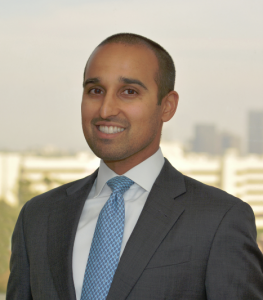FPA New Income (FPNIX) is a remarkable fund, simultaneously conservative and aggressive. It is an absolute return-oriented fixed income fund that embodies FPA’s corporate discipline: don’t buy it if you don’t have a margin of safety and the prospect of decent returns. The explanation of the fund’s investment strategy begins with a simple declaration: “We do not like to lose money.” It is simultaneously an unconstrained and a very constrained strategy. It is unconstrained in that it can invest pretty much wherever opportunities arise though at least 75% of the portfolio investments must earn the “High Quality securities” designation, with the remainder likely in cash or Credit Sensitive issues. It is very constrained, though, by a long-standing and non-negotiable absolute return discipline.
The fund, launched in 1984, has never lost money in any calendar year. FPA notes that “since the inception of this strategy, we have earned a positive absolute return in each calendar year, with considerably less portfolio volatility than various measures of investment performance. We hope and expect to continue this positive trend.” In the first six months of 2022, the fund declined (-2.85%) which places it near the top of its Morningstar peer group.
Over the past 20 years, the fund has had a negative downside capture ratio (-12), which means that it tends to rise when the bond market falls, and a negligible correlation to the movements of the US bond market (R2=10).
The fund has returned 2.6% annually over the past 20 years but 6.4% annually since inception. The lower recent returns reflect the fund’s limited opportunity set in a low-inflation, zero interest rate environment. The higher long-term numbers are a reminder that the strategy is quite capable of generating double-digit returns – as high as 21% in 1985 – in high inflation environments which allows it to book real and not just nominal returns.
New Adventures
On July 1, 2022, Thomas Atteberry stepped away from the fund. Mr. Atteberry joined FPA in 1997, comanaging the New Income fund with Bob Rodriquez from 2010 to Mr. Rodriquez’s  retirement in 2016. In 2015, Abhi Patwardhan joined the team. A year ago, FPA announced Mr. Atteberry’s decision to retire from portfolio management this year. It has long been clear that Mr. Patwardhan was destined to succeed him.
retirement in 2016. In 2015, Abhi Patwardhan joined the team. A year ago, FPA announced Mr. Atteberry’s decision to retire from portfolio management this year. It has long been clear that Mr. Patwardhan was destined to succeed him.
Abhi is the Director of Research for FPA. Prior to joining the firm, Abhi was an investment analyst at Reservoir Capital Group, D.B. Zwirn & Co., UBS Warburg and Donaldson, Lufkin & Jenrette. He earned a B.A. summa cum laude, Economics, and an MBA, both from the Wharton School of the University of Pennsylvania.
He’s supported by a half dozen specialists in various fixed-income fields.
New Opportunities
New Income closed to new investors in 2020. It reopened to new investors on July 1, 2022. We spoke with Abhi on the eve of the reopening about the decision.
We soft closed in mid-2020 because two-year Treasuries were yielding 15 bps, spreads had compressed after the March sell-off and continued to do so. For absolute return-oriented investors, people who are very disciplined, those lower yields dramatically narrowed our opportunity set.
On top of that, we had to consider the size of our asset base, steady inflows and the amount of cash we already had on hand; just we had a lot more cash than opportunities so we initiated a preemptive closing to protect existing investors.
At the same time, we promised that if any of the three – asset base, fund flows or opportunity set – changed substantially, we’d reopen. They have, so we did.
Six months of asset outflows and the opportunities created by “the worst bond market in a century” led FPA to reopen the fund.
Consider the opportunity
You get a clear sense of the team’s perspective on risk management in an “Insights” white paper entitled Risk is where you’re not looking (2019). They note that the 2008 global crisis was catalyzed by excessive consumer debt and a rickety banking system. They observe that those two actors are actually in solid shape just now, but “sovereign and US municipal governments and corporates are more the problem now and that their excessive leverage will either catalyze or magnify the next downturn. The current debt trajectory, in terms of levels and quality of credit, is unsustainable and will inevitably end.” Likewise, corporate debt – nominally “investment grade” – has more than doubled since ’08 to $8.8 trillion, growing at twice the rate of the GDP. That easy money has underwritten the stock market’s prodigious run:
The increase [in corporate debt financing] has aided corporate mergers and acquisitions (“M&A”), leveraged buyouts and share repurchases and supported to some immeasurable level the growth in corporate earnings, all of which have served as drivers of US stock market returns.
Almost foreshadowing the hit film Don’t Look Up (2021) the FPA team reflected on the strategy of many investors when confronting risk: pretend it’s not there.
Some choose to live in zones at high risk of fires and volcanic eruptions without understanding the risk, while others understand the risk yet live there anyway. We believe many investors in the bond market are living with risk they don’t appreciate and so lack appropriate consideration for what might happen. At some point, fear will reenter the market, and both FPA teams are prepared to follow on its heels to scoop up attractive opportunities.
The thoughts communicated today are not new, but given the continued stretching of the proverbial rubber band, we thought it prudent to spend this time communicating our concern. Fears of a recession have led to corporate bond market weakness in Q4 2018, and with the commensurate increase in lender caution, we are beginning to see investment grade borrowing costs increase. We cannot and never do speak to timing. This may all be a head fake at this moment in time. That, however, does not change the real risk that remains – a risk that someday may be realized.
Michael Lewis discusses unappreciated threats in his new book, The Fifth Risk (2019). Although he isn’t speaking of investing, one of his thoughts seems a fitting way to close. “If your ambition is to maximize short-term gain without regard to the long-term cost, you are better off not knowing the cost.” On the contrary, we seek to maximize long-term gain while knowing the costs, willing as always to sacrifice the near-term in its pursuit.
They semi-celebrate the bond market carnage in early 2022, which at least restored some discipline and some opportunities to the market.
The bond market has had a terrible start to the year. In fact, we are in the midst of the worst bond market in at least 40 years.6 Inflation led to a significant increase in risk-free rates that has roiled bond markets, resulting in negative returns for nearly all types of bonds. The silver lining of this negative performance is that bonds are now meaningfully more attractive, creating an opportunity to enhance the Fund’s long-term return profile. (First Quarter 2022 Commentary)
For investors struggling to balance the challenge of an inflation-ravaged bond portfolio with anxiety about recession as “the next shoe to fall,” the reopening of FPA New Income comes at a propitious moment. It deserves your attention.
The fund’s homepage is unusually rich with detail.


